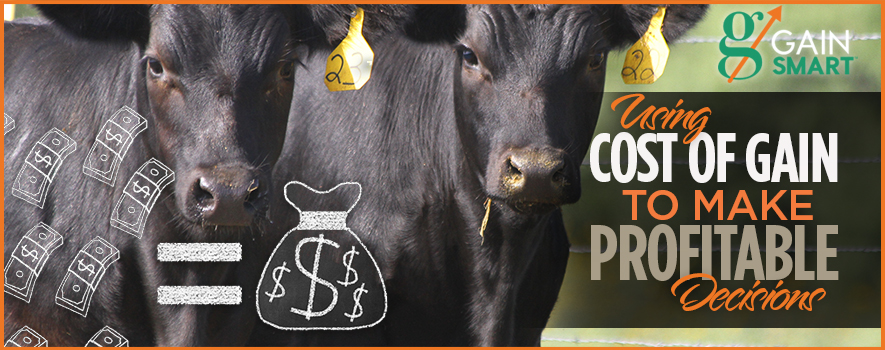 History shows that production profitability is closely tied to several key factors, one being cost of gain. Producers can use their records on specific input costs and gain calculations to benchmark their enterprises. Simply, cost of gain can be used to make good business decisions.
History shows that production profitability is closely tied to several key factors, one being cost of gain. Producers can use their records on specific input costs and gain calculations to benchmark their enterprises. Simply, cost of gain can be used to make good business decisions.
Management records indicate that feed costs can account for 50 to 70 percent of the cost of producing beef. Feed costs should include both purchased and raised feed. The cost of raised feed is computed using the opportunity cost of feed grains, hay, pasturelands and other feedstuffs produced by the ranch and utilized in the cattle growing operation.
Feed per unit of gain (feed efficiency) has remained a very important factor in producing profits or losses. Feed conversion or efficiency is typically assumed to be an indirect indicator of profitability. The calculation for feed efficiency is: Total feed consumed ÷ (Weight sold – weight started). Therefore, as the name implies, it is a simple ratio of feed divided by amount of gain or a ratio of Average Daily Intake divided by the Average Daily Gain. Feed efficiency is usually a fairly straight forward number to generate.
The next step is to link economics to biology. By using the feed cost instead of feed consumed, making an expression of feed costs per unit of gain, one has converted a biological equation to an economic indicator.
Total cost of gain can be divided into the compartments that make up the gain. For example, researchers and nutritionists agree that Amaferm® will increase average daily gains of stocker cattle about 0.2 pounds per day. This weight gain is in addition to the 0.2 pounds per day that will be realized from the mineral, trace mineral and vitamin supplementation in the Gain Smart minerals. With a total supplementation cost of about 12¢ per head per day, the cost of gain for Gain Smart™ mineral is only 30¢ per pound. Cattlemen will always be drawn to supplements that efficiently enhance gains will lower the overall cost of gain and improve profits.


